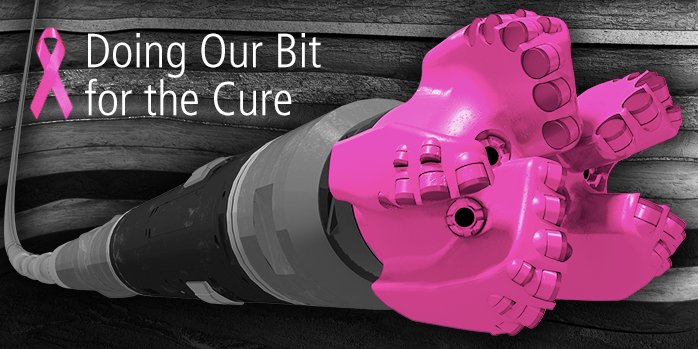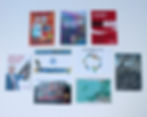OVERTAKEN BY REALITY: SATIRE INSIDE A DYSTOPIA
- Darren Cullen
- Oct 11, 2022
- 5 min read

Between the Pope auctioning off his autographed Lamborghini for charity, Lockheed Martin bidding to run NHS GP surgeries, and the FBI’s social media tributes to Martin Luther King Jr, it's easy to come to the conclusion that satire is dead. And maybe it is.
As an artist who uses satire in my work I’ve been overtaken by reality more than once, and sometimes wondered if maybe I’m not making jokes, but accidentally producing comically malevolent ideas that could actually be used by the bastards who run the place.
But while reality can sometimes make satire seem redundant, the demands of corporate strategy and the contradictions of capitalism often produce events which are self-satirising in a way that’s funnier and darker, because its real but also because, in its own perverse way - it’s normal. Like the oil and gas drill equipment company Baker Hughes selling a pink drill-bit to fracking clients in order to raise awareness about breast cancer (“Doing our bit for the cure”.) Or a 1960s ad for the company that became ExxonMobil boasting about how each day the oil giant “supplies enough energy to melt 7 million tons of glacier!”, or the veterans charity Help for Heroes licensing their logo to sell meat offal adorned with its own medal at the supermarket. Just some of the incredibly normal things you’ll find in late-stage capitalism that aren't supposed to be satire.
I found a few other examples when researching my Hell Bus project, a satirical Shell greenwashing showroom installed in an old single decker school bus that I brought to COP26 in November 2021. When the real world has actually produced such artefacts as The Shell Guide to Britain’s Threatened Wildlife; or a Shell sponsored Formula 1 Lego set that features instructions to rebuild it as a Shell oil rig; and a 1950s Shell ad that mocks pterodactyls for going extinct because they “could not or would not keep pace with changing conditions”, any satire has its job cut out.
In an early version of the Hell Bus installation I had a section about greenwashing the military by inserting seeds into missiles, to turn bombed-out cities into forests. I later found out this was similar to an idea actually developed by the US Military, for biodegradable training ammunition that included seeds to greenify firing ranges. In the same installation I’d drawn a piece about Shell converting wind farms, submerged by rising sea levels, into tidal turbines; two years later I saw a BP advert about the company seeing a future in “solar farms that float”.
To paraphrase Frank Zappa, satire isn’t dead, it just smells funny. This is just what happens to satire when you live inside the dystopia. As democracies become more managed and authoritarian, power structures exponentially amass more power and wealth at the expense of the governed, and the economy runs at full pelt towards climate apocalypse, satire may begin to sound less like a social critique and more like a dark joke before the asteroid hits.
In 2017 Shell launched a greenwashing campaign called Make The Future. Alongside slick music videos featuring sold-out pop stars, documentary-style fluff pieces about hydrogen-powered cars, and a multi-day festival of bullshit in London’s Olympic Park, the campaign also showcased some of Shell’s big ideas for combating climate change: a footstep-powered football pitch, a gravity powered lamp, and roadside wind-turbines powered by passing lorries. It didn’t matter that all these ideas either didn’t work or were so expensive as to be impractical for real-world use. In the last decade the oil industry’s strategy on global warming has changed from Denial to Delay. As wildfires engulf continents and record-breaking hurricane follows record-breaking heatwave, it became harder to keep up the fiction that we were not doing anything weird to the climate. But by ostensibly accepting the science and pretending they’re working on the problem, oil giants can postpone the solutions. There’s a lot of profit that can be made between now and the total collapse of organised human life on Earth.
My Hell Bus exhibition is essentially a bleak exaggeration of genuine Shell policy and corporate history expressed in the form of a pre-apocalyptic marketing suite. But while I was installing the exhibits about “Shell’s plans” to replace melted icebergs with polystyrene substitutes, rewild the great pacific garbage patch, or recycle the water used in fracking into a refreshing drink, a part of me worried if some of these ideas weren’t stupid enough to avoid becoming real.

One exhibit shows the percentage of Shell’s annual investment budget that they’ve pledged to spend on green energy by 2030 vs the rest of its nightmarishly gargantuan investment in fossil fuel extraction. But even this tiny slither of potential green investment is twice the amount Shell currently invests in renewables, a figure which also includes investments in unworkable and dangerous distractions like carbon capture and blue hydrogen. This investment in “green energy” is interestingly the same amount that Shell spends on marketing per year. I’m tempted to think the only reason oil companies invest in solar farms and wind turbines at all is so they’ll have something to photograph for their fossil fuel advertising.
It is now public knowledge that oil and gas companies knew that their products were causing global warming, decades before it became a public issue, but purposefully lied and did not raise the alarm. Company documents show that, despite their reputation for climate denial, Big Oil did actually take the threat of global warming seriously, but only internally. They spent millions researching how hurricanes would increase in power and frequency and patented new oil-rigs designed to withstand them. Shell raised its drilling platforms 6ft in the North Sea to avoid the coming rising sea levels. They also designed ice-breaking oil tankers and rigs that could exploit and traverse the soon-to-be-melted Arctic of the near-future, (another great example of reality eclipsing satire.) At the same time the industry spent millions on junk science to confuse the debate and delay government action, often using the exact same researchers the tobacco industry used to cast doubt on the connection between their product and cancer.
The tobacco and oil industries have been intimately connected for decades. RJ Reynolds, a major tobacco company, even owned and operated its own oil company, American Independent Oil in the 1970s. Oil and tobacco boards shared directors, their companies shared research scientists, used the same PR firms and deployed the same media strategies to smooth out the regulatory and public image problems that tend to haunt any business that kills people in large numbers.
Shell and Exxon both employed their labs to produce some of the first research into the effects of cigarette tar on human health. Both companies later patented some of the first cigarette filters. These filters not only helped the tobacco industry healthwash its public image in a time of increased scrutiny over the dangerous effects of their products, but also created an enormous new market for petroleum-based plastics. While cigarette filters do almost nothing to reduce the harm of tobacco smoke, (the yellowing of the filter is a trick caused by a PH reaction to the smoke, not, as it appears to be, from the accumulation of filtered toxins) the filters have made a significant impact in increasing plastic pollution, and are now the single most abundant item of plastic waste on the planet.
Shell’s cigarette filter idea is much like their global warming plan: Present the public with pseudo-technological fixes that don’t work, but which help reassure law-makers and consumers, giving Shell and friends social-license to continue extracting and burning oil and gas, all while externalising the deadly costs of their business model onto the rest of us. Greenwashing is about postponing the inevitable day when the business models that are destroying our world are stopped for good. Until that day, Shell will be out there trying to Make the Future a living hell.
The Hell Bus will be free to view at various locations in the coming year. You can find details at royaldutchhell.com
This article originally featured in DOPE Magazine, issue 18, published by Dog Section Press.










































































